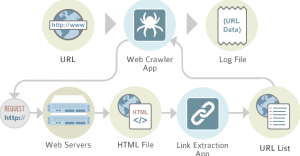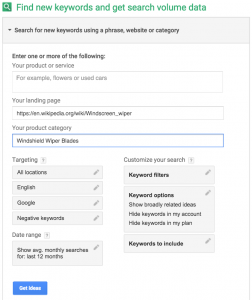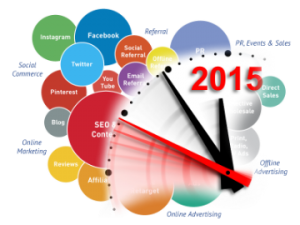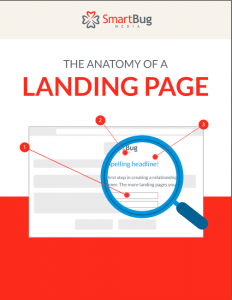Conversion Rate Optimization (CRO) is a marketing buzzword that gets tossed around quite frequently. But what exactly is it and how can you be better at it?
CRO is a constant process of trial and error, of creating and testing hypotheses. However, a common myth is that testing different button colors or font type to see which converts the most customers is what conversion rate optimization is all about. That’s all fine and dandy, but I’m going to guess that changing a button color isn’t going to give your company, or its website visitors, that “aha!” moment that suddenly converts mass amounts of users.
At its core, CRO is discovering the path a user takes on your site and improving it to create the best and easiest route for a visitor to convert into a customer.

There are many stages to CRO so it’s important to decide what action you want the visitor to take on each of your landing pages. It could be signing up for a newsletter, creating an account on the site, scheduling a demo, or anything else you decide. Whatever action you want the visitor to take, this is what you will focus on measuring and improving to increase your conversion rate.
Why Conversion Rate Optimization Matters
Firstly, you wouldn’t have a website unless you wanted people to visit it and learn about or buy your product. Why not make that process as smooth as possible. Secondly, you most likely pay for your website. You pay to keep it running and pay, via paid search, for a portion of the users who visit your site. CRO increases the return on investment of that spend.
As we’ve said before, lead generation is dead, it’s all about the tie back to sales now. In other words, it doesn’t matter how much traffic you’re getting to your website if it’s not the right kind of traffic that’s eventually converting into revenue. And it’s much more cost-effective to optimize those who are already visiting your site, than to attract more traffic via paid search and display advertising.
Before we outline a CRO plan, lets first define some key terms:
Call to Action (CTA): A call to action is any button or interface on your site that asks a visitor to complete an action. It could ask them to download an e-book, sign up for a newsletter, or schedule a demo– all are CTAs.
Conversion Funnel: A conversion funnel is the path a visitor takes through your site on their way to completing a conversion. It could go blog post > ebook download > scheduling a call with your sales team. There are many paths and focusing on your customer’s journey allows you to see which pages are converting and which aren’t.
A/B or Split Testing: A/B testing, also known as Split Testing, is the comparison of one version of a webpage, or design element, to another. In A/B testing only two things are compared at a time.
Multivariate Testing (MVT): Multivariate testing is similar to A/B, except it tests multiple variations of different elements in various combinations. The goal is to discover which combination of elements performs the best.
Total Conversions: Total conversions is the number of people who performed the action you wanted them to take.
Conversion Rate: Conversion rate is the number of total conversions divided by the number of visitors to your site. For example, 10 people visit your website and 5 of them convert. Your conversion rate would be 50 percent.
Now, we can get started on outlining Conversion Rate Optimization 101.

Define the Goals and KPIs You Want to Measure
Before you go to task testing what works and what doesn’t, you first have to define your goals. Do you want users to sign up for your newsletter? Do you want them to download an e-book? Whatever it is, how are you going to get them to do that? That’s what you need to define, set up the A/B test, and then measure the results.
If you’re unsure where to start, here are a few areas that may improve CRO:
Live Chat- Live chat is a great way to interact with customers in real time. Imagine yourself in a store, you walk around looking at items and it’s almost guaranteed a store employee is going to ask if you need any help. Why not apply that same principal to your website? It saves your customer from having to find the contact page to send you an email or locating your FAQ page and hoping someone else had the same question. Both of these actions most likely take the customer off of the page you’d like to optimize and they’ll probably bounce from your site altogether until they get a response to their question. Answering questions in real time solves this problem. It also proves that your company is made up of real people, not bots with auto responses.
Testimonials- Don’t you just love it when you’re passionate about something and someone new responds, “me too!”? Affirmation is a very strong language and can even be persuasive. Having a section for customer testimonials is a great way to show new website visitors what everyone loves about your company and product. If there are some not-so-favorable reviews, use the client’s suggestions as a way to improve your business. Also, take the time to respond and say that you’re taking their feedback into consideration. Again, this shows the human side of your company and also lets clients know you value their input. Seeing these could be the nudge your visitor needs to convert.
CTAs- Creating a CTA is the easiest way to ask a visitor to do something on your website. It can be something top of funnel like a “read more” button on a blog post or down through the bottom of the funnel with a prompt to schedule a demo. CTA location, size, and wording can all have an effect on optimization. It’s necessary to test each variation and see what works best to get your website visitors to convert. It will be different for every business.

Take Your Time
Don’t test everything all at once. CRO takes patience and is a cyclical process. It’s important to only test one thing at a time and work your way through your list of goals. Making too many changes at once will make it impossible to know which change improved conversion. Was it the call to action that popped up mid-page or was it the addition of a live chat feature? Make one change, measure it, choose the option that converts the best, then move on to another test.
Statistical significance is important here, though. If the first 10 people to visit your site all take the same action, you can’t rely on that as representative of the whole. What if the next 10 all take the opposite action? The sample size needs to be large enough that the data you obtain is statistically relevant and you can trust that the differences are meaningful before you make the change.
There’s always room for improvement. No matter how many visitors you’re converting into customers, there will always be things you can test and improve upon to make the user experience better. CRO is ongoing.
The Friendlier the Better
No one ever complained about a website being too easy to use. CRO is about building a website that is user-friendly. It’s about making the process as smooth as possible for visitors to find what they’re looking for and convert into clients. Make sure your site works well on mobile and on desktop with whatever browser the visitor is using. How many pages or clicks does a user have to go through to get what they’re looking for? Narrow that down to as few as possible. Time is money and the less time a visitor spends searching your site for the information they’re looking for, the more time they can spend signing up for your newsletter or speaking with your sales team.
In its most basic form, conversion rate optimization is about finding why visitors aren’t converting, forming a plan to fix that, then measuring the results. As long as you’re listening to the data and taking actions to improve your website, there’s no wrong way to do it. Now get to testing!
Digital & Social Articles on Business 2 Community
(95)







